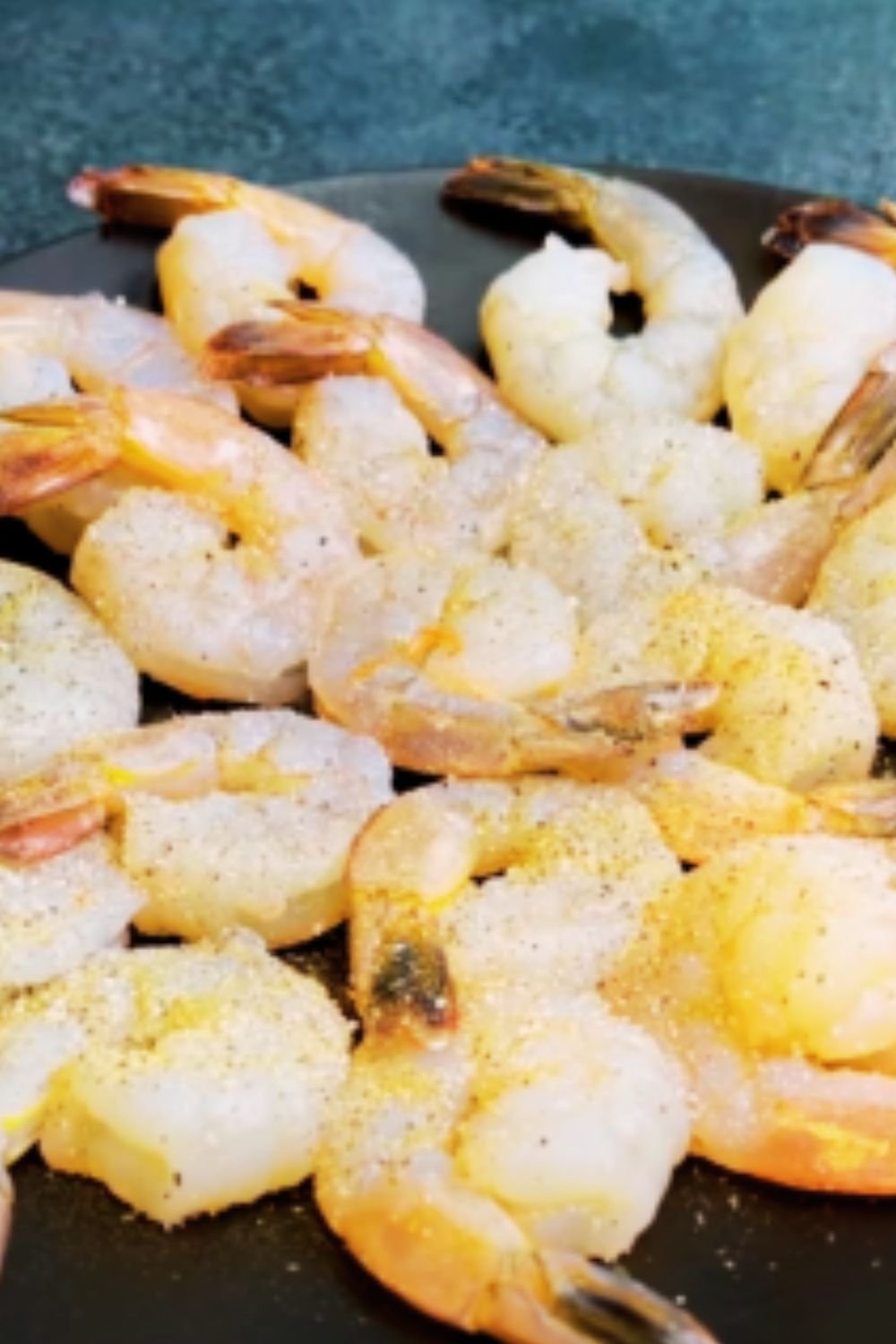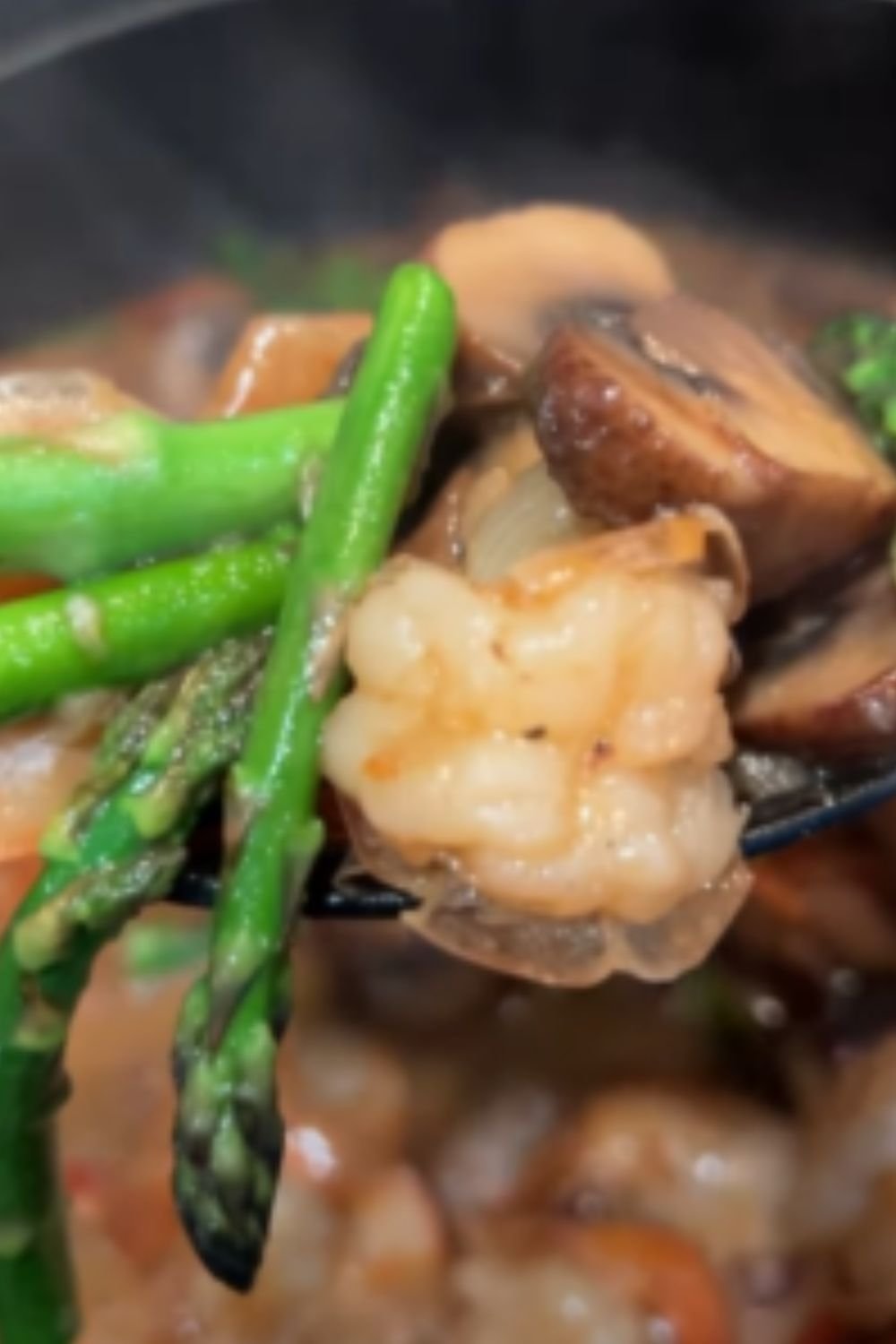There’s something magical about the combination of crispy, tender shrimp coated in that signature tangy, spicy buffalo sauce. When I first experimented with buffalo shrimp years ago, I was trying to create an alternative to traditional chicken wings for a seafood-loving friend. What started as a simple substitution quickly became one of my most requested recipes.
Buffalo shrimp delivers all the beloved flavors of classic buffalo wings but with the sweet, delicate taste of shrimp. The contrast between the crispy coating, juicy shrimp, and bold sauce creates an irresistible flavor experience that’s perfect for game days, parties, or just when you’re craving something with a kick.
In this article, I’ll share my perfected buffalo shrimp recipe along with tips, variations, and serving suggestions to help you create restaurant-quality buffalo shrimp right in your own kitchen. Whether you’re new to cooking seafood or a seasoned pro, you’ll find this recipe straightforward and the results absolutely mouthwatering.
What Makes Buffalo Shrimp Special
Buffalo shrimp combines the best of two worlds—the beloved, tangy heat of buffalo sauce with sweet, succulent shrimp. Unlike buffalo wings, which can be messy and time-consuming to eat, buffalo shrimp offers a more elegant one-bite experience without sacrificing any flavor.
What truly sets excellent buffalo shrimp apart is achieving the perfect balance: a crispy exterior that stands up to the sauce, perfectly cooked shrimp that remains tender, and a sauce that delivers that signature buffalo tang with just the right level of heat.
The dish has humble origins in American casual dining but has evolved into a versatile appetizer that can be dressed up or down depending on the occasion. I’ve served these at casual Super Bowl parties and elegant cocktail gatherings alike—they’re always the first dish to disappear.
Essential Ingredients for Perfect Buffalo Shrimp
The quality of your ingredients makes all the difference in this relatively simple recipe. Here’s what you’ll need to gather before getting started:
The Shrimp
- 1 pound large shrimp (21-25 count) – I prefer shrimp on the larger side for this recipe as they’re easier to bread and don’t overcook as quickly. Always look for shrimp that smells fresh with firm, translucent flesh.
- Preparation – Peeled and deveined with tails on (the tails provide a convenient handle for dipping)
For the Coating
- 1 cup all-purpose flour
- 1 tablespoon garlic powder
- 1 tablespoon onion powder
- 1 teaspoon paprika
- 1/2 teaspoon salt
- 1/2 teaspoon black pepper
- 2 large eggs, beaten
- 1 cup panko breadcrumbs – These Japanese breadcrumbs provide superior crispiness compared to regular breadcrumbs
For the Buffalo Sauce
- 1/2 cup hot sauce – Frank’s RedHot is traditional for buffalo sauce, but use your favorite
- 4 tablespoons unsalted butter
- 1 tablespoon honey – This adds a subtle sweetness that balances the heat
- 1 teaspoon garlic powder
- 1/2 teaspoon Worcestershire sauce – For depth of flavor
For Serving
- Blue cheese or ranch dressing – Homemade is best, but good-quality store-bought works too
- Celery sticks – The traditional cooling accompaniment
- Carrot sticks – Adds color and another crunchy element
- Fresh chives or green onions, chopped – For garnish
Equipment You’ll Need
Having the right tools ready will make this recipe much easier to execute:
- Large mixing bowls for the breading station
- Baking sheet lined with parchment paper
- Wire cooling rack (optional, but helps keep the shrimp crispy)
- Small saucepan for the buffalo sauce
- Kitchen thermometer for monitoring oil temperature
- Deep, heavy-bottomed pot or deep fryer
- Slotted spoon or spider strainer
- Paper towels for draining
Step-by-Step Buffalo Shrimp Recipe
Preparation
- Prepare the shrimp: If using frozen shrimp, thaw completely under cold running water. Pat dry thoroughly with paper towels. This is crucial for proper breading adhesion and to prevent dangerous oil splatter.
- Set up your breading station: Arrange three shallow bowls in a row. In the first bowl, combine flour, garlic powder, onion powder, paprika, salt, and pepper. In the second bowl, beat the eggs until smooth. In the third bowl, place the panko breadcrumbs.
- Heat your oil: Fill a heavy-bottomed pot with about 2 inches of vegetable or canola oil. Heat to 350°F (175°C). If you don’t have a thermometer, you can test by dropping a breadcrumb into the oil—it should sizzle immediately and float to the top.
Breading Process
- Dredge the shrimp: Working with a few shrimp at a time, dredge first in the seasoned flour mixture, shaking off any excess.
- Egg wash: Dip the floured shrimp into the beaten eggs, allowing any excess to drip off.
- Breadcrumb coating: Finally, press the shrimp into the panko breadcrumbs, ensuring they’re evenly coated on all sides. Place the breaded shrimp on a baking sheet while you finish coating the rest.
Frying the Shrimp
- Test the oil: Double-check your oil temperature is at 350°F (175°C).
- Fry in batches: Carefully add 5-6 shrimp to the hot oil at a time, being careful not to overcrowd the pot. Overcrowding will lower the oil temperature and result in soggy shrimp.
- Cook until golden: Fry for about 2-3 minutes until golden brown and crispy. Shrimp cook quickly, so keep a close eye on them.
- Drain: Remove with a slotted spoon and transfer to a paper towel-lined plate or a wire rack set over a baking sheet.
- Maintain oil temperature: Allow the oil to return to 350°F between batches.
Preparing the Buffalo Sauce
- Melt the butter: In a small saucepan over medium-low heat, melt the butter.
- Combine ingredients: Once melted, add the hot sauce, honey, garlic powder, and Worcestershire sauce. Whisk until well combined.
- Simmer: Allow the sauce to simmer for 1-2 minutes, then remove from heat.
Coating the Shrimp
There are two methods for coating your shrimp with buffalo sauce:
Method 1: Tossing
- Place the fried shrimp in a large bowl.
- Pour about half of the warm buffalo sauce over the shrimp.
- Gently toss until all shrimp are evenly coated.
- Add more sauce as needed until you reach your desired level of coating.
Method 2: Brushing (For Maximum Crispiness)
- Arrange the fried shrimp on a wire rack or serving platter.
- Use a pastry brush to lightly brush each shrimp with buffalo sauce.
- This method helps maintain the crispy texture of the breading.
Serving
- Arrange the buffalo shrimp on a serving platter.
- Place a small bowl of blue cheese or ranch dressing in the center.
- Arrange celery and carrot sticks around the platter.
- Garnish with chopped chives or green onions.
- Serve immediately while the shrimp are still hot and crispy.
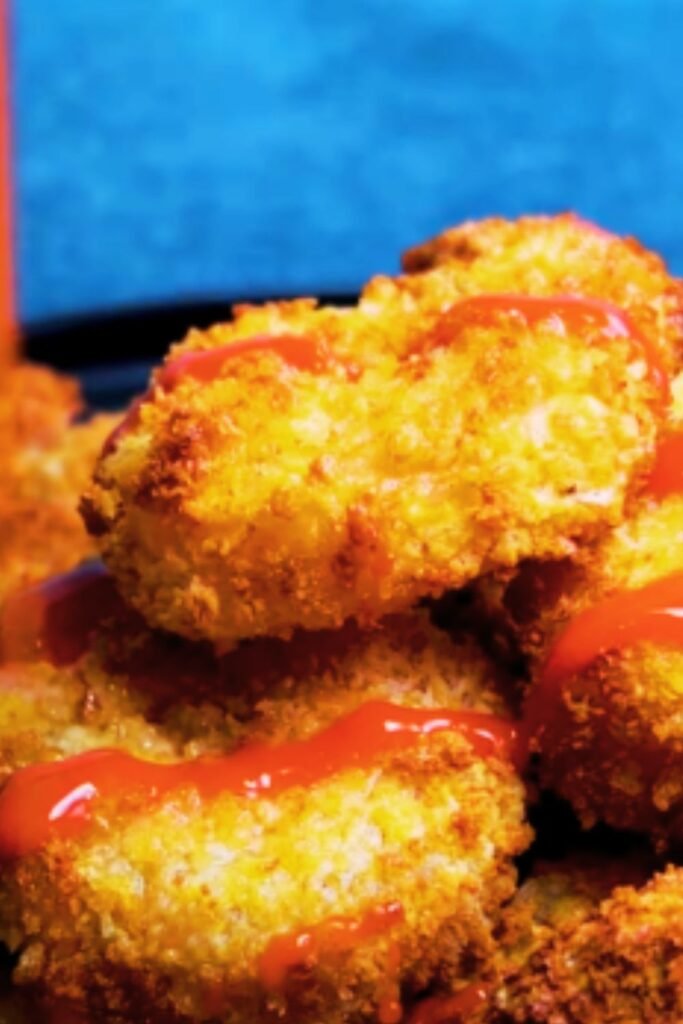
Baked Version: A Healthier Alternative
If you prefer to avoid deep frying, here’s how to make oven-baked buffalo shrimp that’s still deliciously crispy:
Ingredients (Adjustments)
- Add 2 tablespoons of olive oil to the panko breadcrumbs
- Cooking spray or olive oil spray
Modified Instructions
- Preheat your oven to 425°F (220°C).
- Line a baking sheet with parchment paper and place a wire rack on top. Spray with cooking spray.
- Follow the same breading procedure as above.
- Before the final panko coating, mix the breadcrumbs with 2 tablespoons of olive oil. This helps achieve a crispier result in the oven.
- Arrange the breaded shrimp on the prepared wire rack, ensuring they don’t touch.
- Spray lightly with cooking spray for extra crispiness.
- Bake for 10-12 minutes until the coating is golden and the shrimp are opaque and cooked through.
- Proceed with the buffalo sauce coating as in the original recipe.
Air Fryer Method
For those with an air fryer, this method produces excellently crispy results with minimal oil:
- Preheat your air fryer to 400°F (200°C).
- Lightly spray the air fryer basket with cooking spray.
- Follow the standard breading procedure.
- Place a single layer of breaded shrimp in the air fryer basket, leaving space between each piece.
- Lightly spray the tops with cooking spray.
- Cook for 8-10 minutes, flipping halfway through, until golden and crispy.
- Work in batches if necessary.
- Coat with buffalo sauce as directed in the main recipe.
Nutritional Information
Here’s the approximate nutritional breakdown for a serving of buffalo shrimp (about 6-7 shrimp):
| Nutrient | Amount |
|---|---|
| Calories | 320 |
| Protein | 18g |
| Carbohydrates | 24g |
| Fat | 18g |
| Saturated Fat | 6g |
| Cholesterol | 225mg |
| Sodium | 950mg |
| Fiber | 1g |
| Sugar | 3g |
Note: Nutritional values will vary based on exact ingredients and serving sizes.
Pro Tips for Buffalo Shrimp Success
After making this recipe countless times, I’ve collected some helpful tips that make a significant difference in the final result:
- Pat the shrimp very dry: Any moisture will create steam during frying, preventing a crispy coating.
- Maintain oil temperature: Use a thermometer to keep the oil at a consistent 350°F. If the temperature drops too low, the shrimp will absorb more oil and become greasy. If it’s too high, the outside will burn before the shrimp cooks through.
- Don’t overcrowd: Fry in small batches to maintain oil temperature and give the shrimp room to cook evenly.
- Double-coating option: For extra crispiness, you can double-coat the shrimp by repeating the flour-egg-breadcrumb process. This creates an even crunchier exterior that stands up well to the sauce.
- Sauce temperature matters: The buffalo sauce should be warm but not hot when coating the shrimp. If it’s too hot, it can make the coating soggy.
- Make ahead strategy: You can bread the shrimp up to 2 hours ahead and keep them refrigerated. However, they should be fried just before serving for best results.
- Reheating leftovers: To maintain crispiness when reheating, place in a 375°F oven for 5-7 minutes rather than using a microwave.
Sauce Variations to Try
While classic buffalo sauce is always a winner, here are some delicious variations to consider:
Sweet & Spicy Buffalo
- Add 2 tablespoons brown sugar to the standard buffalo sauce
- Mix in 1/2 teaspoon cayenne pepper for extra heat
Honey Garlic Buffalo
- Double the honey in the original recipe
- Add 2 cloves of minced fresh garlic instead of garlic powder
- Reduce hot sauce by 2 tablespoons
Asian-Inspired Buffalo
- Add 1 tablespoon soy sauce
- Mix in 1 teaspoon sesame oil
- Include 1 tablespoon rice vinegar
- Garnish with sesame seeds and green onions
Smoky Chipotle Buffalo
- Replace half the hot sauce with pureed chipotle peppers in adobo
- Add 1/2 teaspoon liquid smoke
- Include 1/2 teaspoon ground cumin
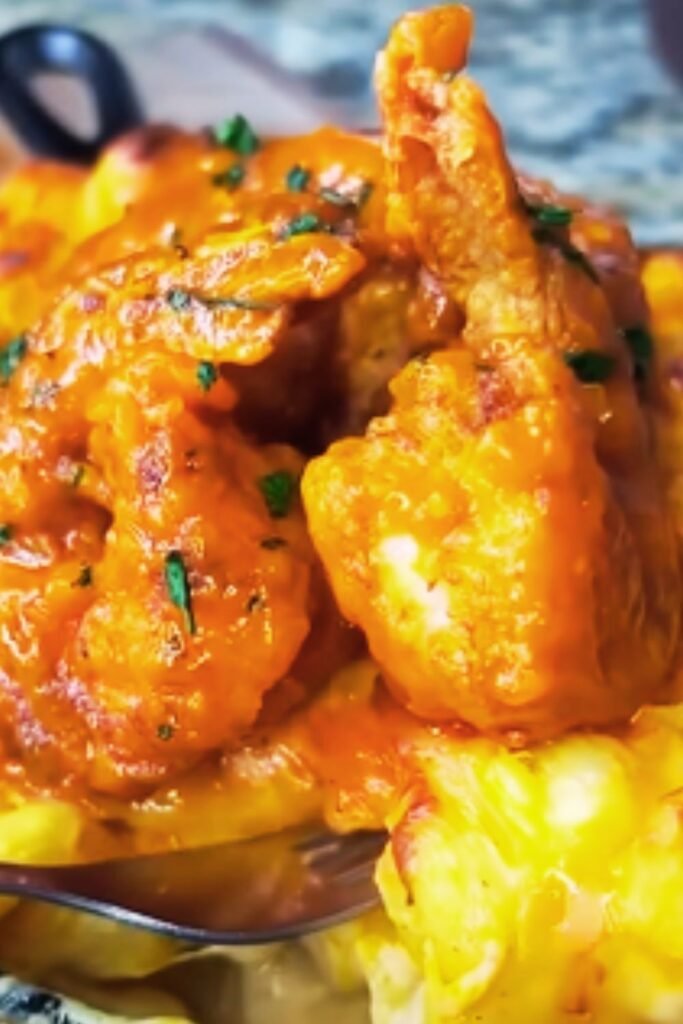
Serving Suggestions and Perfect Pairings
Buffalo shrimp makes an excellent appetizer, but can also be transformed into a main dish. Here are some ideas for serving:
As an Appetizer
- On a platter with the traditional celery, carrots, and blue cheese dressing
- Skewered on toothpicks for easy party grabbing
- As part of an appetizer spread with other finger foods like mozzarella sticks and potato skins
As a Main Course
- Buffalo Shrimp Tacos: Place in warm tortillas with coleslaw, diced avocado, and a drizzle of ranch dressing
- Buffalo Shrimp Po’ Boy: Serve on a toasted baguette with lettuce, tomato, and remoulade sauce
- Buffalo Shrimp Salad: Top a crisp romaine salad with buffalo shrimp, blue cheese crumbles, diced celery, carrots, and ranch dressing
Side Dishes That Complement Buffalo Shrimp
- Coleslaw with a vinegar-based dressing to cut through the richness
- Sweet potato fries
- Corn on the cob
- Cucumber and tomato salad
- Garlic parmesan potato wedges
Non-Alcoholic Beverage Pairings
- Lemonade or limeade
- Sparkling water with citrus
- Iced tea (sweet or unsweetened)
- Cucumber-mint infused water
- Classic cola or root beer
Common Problems and Solutions
| Problem | Cause | Solution |
|---|---|---|
| Soggy coating | Oil not hot enough | Maintain oil temperature at 350°F |
| Too much sauce | Use the brushing method instead of tossing | |
| Rubbery shrimp | Overcooked | Reduce cooking time; large shrimp only need 2-3 minutes |
| Coating falls off | Shrimp too wet | Pat shrimp completely dry before breading |
| Didn’t follow breading order | Always do flour first, then egg, then breadcrumbs | |
| Too spicy | Individual heat tolerance | Increase butter ratio in sauce; add more honey |
| Not spicy enough | Personal preference | Add cayenne pepper or use a spicier hot sauce |
| Burns quickly | Oil too hot | Use a thermometer to monitor and adjust temperature |
| Greasy result | Oil absorbed into coating | Ensure oil is hot enough; drain well on paper towels |
Make-Ahead and Storage Tips
While buffalo shrimp is best enjoyed fresh, there are ways to prepare components ahead of time:
Make-Ahead Options
- Seasoned flour mixture: Can be prepared up to 1 week ahead and stored in an airtight container.
- Buffalo sauce: Can be made up to 3 days ahead and stored in the refrigerator. Reheat gently before using.
- Breaded shrimp (unfried): Can be prepared up to 2 hours ahead and refrigerated on a baking sheet in a single layer, covered loosely with plastic wrap.
Storage
- Leftover fried shrimp: Store in an airtight container in the refrigerator for up to 2 days.
- Leftover buffalo sauce: Will keep in the refrigerator for up to 1 week in an airtight container.
Reheating
- Oven method (preferred): Preheat oven to 375°F. Place shrimp on a wire rack over a baking sheet and heat for 5-7 minutes until warmed through and crispy.
- Air fryer: 3-4 minutes at 350°F.
- Avoid microwave: This will make the shrimp rubbery and the coating soggy.
Frequently Asked Questions
Can I use frozen shrimp?
Yes, but make sure they’re completely thawed and patted dry before breading. Frozen shrimp often release more moisture as they thaw, which can affect how well the breading adheres.
What’s the best hot sauce for buffalo sauce?
Frank’s RedHot is the traditional choice for authentic buffalo flavor. However, you can use any cayenne pepper-based hot sauce that you enjoy. Texas Pete, Crystal, and Louisiana Hot Sauce are good alternatives.
Can I prepare this dish ahead for a party?
I recommend frying the shrimp shortly before serving for the best texture. However, you can bread them a couple of hours in advance and keep them refrigerated until ready to fry. The buffalo sauce can be prepared days ahead and reheated.
Is there a gluten-free option?
Yes! Substitute the all-purpose flour with rice flour or a gluten-free flour blend, and use gluten-free panko breadcrumbs. Also, check that your hot sauce and Worcestershire sauce are gluten-free.
What if I don’t have a deep fryer or thermometer?
You can use the baked or air fryer methods instead. If you still want to fry without a thermometer, test the oil by dropping in a breadcrumb – it should sizzle immediately and float to the top, but not burn quickly.
Can I make this less spicy for kids?
Absolutely! Adjust the ratio of butter to hot sauce, using more butter and less hot sauce. You can also add extra honey to tame the heat. Another option is to leave some shrimp plain (just fried) for those who prefer no spice.
What’s the difference between buffalo sauce and just plain hot sauce?
Buffalo sauce is hot sauce that’s been enriched with butter, which gives it a smoother texture and mellows the heat. Traditional buffalo sauce may also include additional seasonings like garlic powder and Worcestershire sauce.
Can I use chicken instead of shrimp?
This recipe can be adapted for chicken tenders or boneless chicken pieces. You’ll need to adjust the cooking time – chicken typically takes 5-7 minutes depending on the size of the pieces.
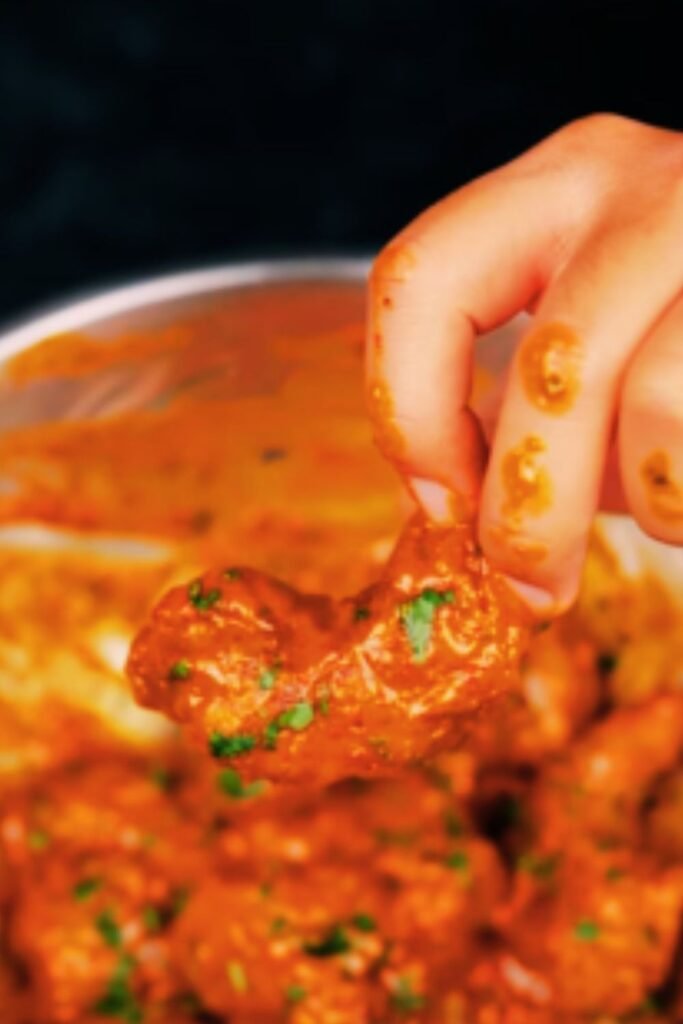
Why This Recipe Works
After refining this recipe over years of preparing it for friends and family, I’ve identified the key factors that make it successful:
- The triple dredge system (flour, egg, panko) creates a substantial coating that remains crispy even after being tossed in sauce.
- Properly seasoned flour adds flavor to the shrimp before it ever meets the buffalo sauce.
- Panko breadcrumbs provide superior crispiness compared to regular breadcrumbs.
- The honey in the buffalo sauce creates the perfect balance of heat and sweetness while also helping the sauce adhere to the shrimp.
- Frying at the correct temperature ensures the shrimp cook quickly without absorbing excess oil.
- The option to brush rather than toss gives you control over how much sauce coats each piece, allowing you to preserve maximum crispiness.
Buffalo shrimp strikes the perfect balance between familiar comfort food and something a bit more special. The combination of tender, sweet shrimp with the bold, tangy heat of buffalo sauce never fails to impress guests or satisfy a craving for something spicy.
Whether you’re serving these as an appetizer for game day, including them in tacos for a weeknight dinner, or featuring them at your next gathering, this buffalo shrimp recipe delivers restaurant-quality results with straightforward preparation. The versatility of cooking methods—traditional frying, baking, or air frying—means you can adapt it to your preference and equipment.
I hope you enjoy making and eating these buffalo shrimp as much as I do. They’ve become one of my signature dishes for good reason!
Q&A Section
What size shrimp works best for this recipe?
Large shrimp (21-25 count per pound) work best for this recipe. They’re substantial enough to withstand the breading and frying process without overcooking, plus they provide a satisfying bite. You can use larger shrimp (16-20 count), but you may need to adjust the frying time slightly. I don’t recommend using small shrimp as they can overcook quickly and are more difficult to bread properly.
How do I know when the shrimp are perfectly cooked?
Perfectly cooked shrimp will form a “C” shape and turn from translucent gray to opaque pink with bright red/orange accents. They should feel slightly firm but still have some give when pressed. If they curl into a tight “O” shape, they’re likely overcooked. For the size recommended in this recipe, 2-3 minutes of frying at 350°F is typically perfect.
Can I reuse the oil after frying?
Yes, you can strain the cooled oil through a fine-mesh sieve lined with cheesecloth to remove any breadcrumb particles. Store it in an airtight container in a cool, dark place and reuse it 2-3 more times before discarding. However, note that the oil may take on a slight seafood flavor, so it’s best used for similar applications afterward.
My buffalo sauce breaks and separates – how can I fix this?
If your sauce separates (the butter separates from the hot sauce), remove it from heat immediately and whisk vigorously. If that doesn’t work, try adding a small amount (1-2 teaspoons) of very hot water while whisking. For prevention, make sure you’re using low heat and don’t let the sauce boil. Adding a tiny bit of mustard (1/4 teaspoon) can also help emulsify the sauce.
What’s the secret to keeping the breading from falling off during frying?
There are several tricks to ensure your breading stays put: First, make sure your shrimp are completely dry before starting the breading process. Second, let the breaded shrimp rest for 10-15 minutes before frying to allow the coating to adhere better. Third, don’t crowd the frying pot, as shrimp bumping into each other can knock off breading. Finally, be gentle when turning the shrimp in the oil.
How can I tell if my shrimp are fresh?
Fresh shrimp should have a mild, ocean-like smell—never fishy or ammonia-like. They should feel firm to the touch and have a translucent, shiny appearance. If buying with shells on, the shells should be firmly attached and not slipping off. The black vein (intestinal tract) should be minimal or absent. When shopping, frozen shrimp are often a better choice than “fresh” shrimp at the seafood counter, which have often been previously frozen and thawed.
What can I substitute for panko breadcrumbs?
If you don’t have panko breadcrumbs, you can use regular breadcrumbs, but the coating won’t be quite as crispy. For a grain-free option, crushed pork rinds make an excellent substitute and create a very crispy coating. Crushed cornflakes or crushed potato chips can also work well as panko alternatives, though they’ll add their own distinct flavor to the dish.
How do I prevent my kitchen from smelling like fried food for days?
To minimize lingering cooking odors: Ensure good ventilation by using your range hood fan at maximum speed. Place a small pot of vinegar water (1:3 ratio) on another burner to simmer while you’re frying. After cooking, simmer water with lemon slices and cinnamon sticks for 15-20 minutes. For next-day freshness, place small bowls of baking soda around the kitchen overnight to absorb remaining odors.
